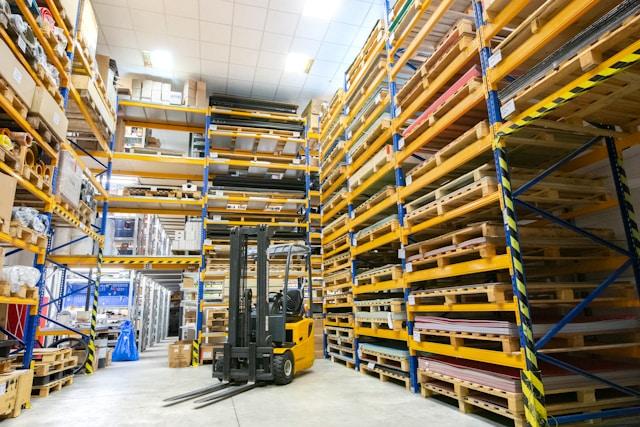3 Steps to Ensure a Successful Automation Implementation in Warehousing
Automation is rapidly transforming the warehousing sector, offering companies a pathway to optimize operations, reduce costs, and maintain a competitive edge. With the growing complexity of supply chains, warehousing demands more efficient and error-free solutions to manage inventory, fulfill orders, and handle logistics. This shift isn't just about replacing manual tasks with machines—it's about adopting a strategic approach to automate processes in ways that unlock new efficiencies and value.
For the software development industry, the role of automation goes beyond integrating hardware like robots or automated guided vehicles (AGVs). It includes leveraging software-driven solutions such as AI for predictive inventory management, real-time data analytics for operational decision-making, and machine learning for continuous process improvement. When automation is correctly implemented, it not only streamlines day-to-day activities but also enhances the warehouse’s adaptability to fluctuations in demand.
The challenge lies in executing automation effectively. Companies must look at automation not as a one-size-fits-all solution but as a carefully tailored strategy that aligns with their specific needs and existing infrastructure. Addressing this requires a step-by-step approach to ensure a seamless transition towards an automated warehousing system that delivers long-term value.
Step 1: Conduct a Comprehensive Needs Assessment
Before diving into automation, companies need to conduct a thorough assessment of their warehouse’s current state and specific automation needs. This involves identifying pain points, understanding bottlenecks, and prioritizing tasks that can significantly benefit from automation. For example, slow order processing, frequent inventory discrepancies, or repetitive manual tasks may indicate prime candidates for automation.
Identify Bottlenecks and Opportunities for Automation
A meticulous evaluation of the warehouse’s operations will reveal inefficiencies and areas where automation can have the greatest impact. By leveraging data analytics, companies can analyze workflow patterns to pinpoint bottlenecks in processes like picking, packing, or inventory management. This data-driven approach ensures that automation investments target the most critical areas for improvement.
Evaluate Technological Readiness and Integration Requirements
Another vital part of the needs assessment is evaluating the warehouse’s technological readiness. Consider existing systems and software in use—such as Warehouse Management Systems (WMS)—and how new automation solutions will integrate with them. Assessing the IT infrastructure's capability to support automation tools is crucial, as seamless integration will prevent disruptions during implementation. This step lays the foundation for a well-orchestrated automation strategy that aligns with the warehouse’s operational requirements.
Step 2: Choose the Right Automation Technology and Partners
Selecting the appropriate automation technologies is crucial for achieving the desired outcomes in warehousing. Given the diverse array of automation solutions available—ranging from robotics to software-driven AI solutions—it's important to match technology choices to specific warehousing needs.
Explore Various Automation Solutions
Different automation technologies serve distinct purposes, and the choice depends on the warehouse's requirements. For instance, robotics can significantly improve order picking and packing, while AI-driven solutions can enhance inventory management through predictive analytics. Below is a comparison of various technologies and their applications:
|
Technology |
Application |
Key Benefits |
|
Robotics |
Picking and packing |
Increases speed and accuracy |
|
AI and Machine Learning |
Predictive inventory management |
Enhances demand forecasting |
|
Automated Guided Vehicles (AGVs) |
Material handling and transportation |
Reduces manual labor, improves efficiency |
|
Internet of Things (IoT) |
Real-time monitoring of inventory |
Enables smarter decision-making |
Partner with Reliable Technology Vendors and System Integrators
Collaborating with experienced technology vendors and system integrators can significantly streamline the implementation process. When evaluating potential partners, consider their track record in the warehousing sector, the flexibility of their solutions, and their ability to provide ongoing support. A trusted partner will not only provide the technology but also assist in customizing the solution to meet specific operational requirements and scaling the system as the warehouse evolves.
Step 3: Implement Automation in Phases and Optimize Continuously
A phased approach to automation implementation is essential for mitigating risks and ensuring a smooth transition. By rolling out automation in stages, companies can evaluate the performance of each phase, identify areas for improvement, and adjust the strategy as needed.
Phased Implementation for Minimizing Disruption
Start with pilot projects in non-critical areas of the warehouse to minimize the risk of disruptions. Use these initial deployments to gather data, identify any integration issues, and refine processes. Gradually expand the implementation to more critical operations, using the insights gained from earlier phases to ensure a smoother rollout across the entire facility.
Monitor Performance and Optimize Workflows
Tracking key performance indicators (KPIs) is crucial for continuous optimization. Monitor metrics such as order accuracy, inventory turnover, and labor efficiency to assess the impact of automation. Use this data to make informed decisions about process improvements. Implementing automation isn't a one-time effort; it requires ongoing evaluation and refinement to ensure it continues delivering maximum value.
Upskill Employees to Work Alongside Automation
Automation doesn’t eliminate the need for human labor; instead, it changes the nature of warehouse work. To maximize the benefits, companies must invest in training their workforce to adapt to new roles. Employees should be equipped with skills to manage, maintain, and optimize automated systems, ensuring a collaborative environment where humans and machines complement each other effectively.
Embracing Automation for a Competitive Edge in Warehousing
Successful automation in warehousing is more than just deploying technology; it’s about creating a strategy that integrates with the company’s broader operational goals. By conducting a comprehensive needs assessment, choosing the right automation technology, and implementing changes in phases, businesses can enhance efficiency and adaptability.
The continuous optimization of automated processes is crucial to remain competitive in today’s fast-paced logistics environment. For those looking to gain insights into how automation in logistics can push performance to a new frontier, visit https://www.trinetix.com/insights/automation-in-logistics-and-warehousing-new-performance-frontier.
With a thoughtful approach to automation, companies can elevate their warehousing capabilities and build resilient, future-proof supply chains.

